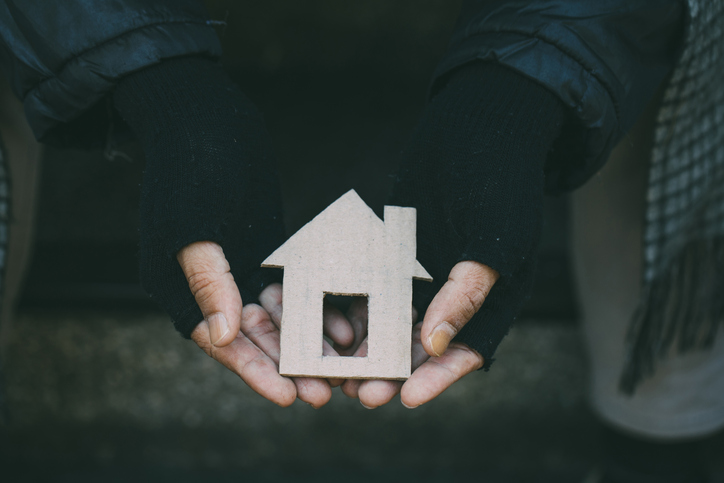
Safe, affordable, and stable housing is an important protective factor against both sexual violence perpetration and victimization. Housing instability can affect anyone in our community, but especially those who have had trauma or violence as part of their life history.
In 2023, alongside the continued global pandemic, the U.S. witnessed a troubling increase in rates of homelessness and housing insecurity. Economic instability faced further pressure due the lingering effects of the COVID-19 pandemic in addition to job loss, wage stagnation, and rising living costs. In a recent report, the U.S. Department of Housing and Urban Development found that barriers in the rental market and the termination of eviction protections helps explain the 12% rise in homelessness in 2022, which equates to 653,000 people (more people than live in the city of Boston alone).
Rental market instability and limited, insufficient, or non-existent eviction protection puts those already in crisis into even more dangerous dire-straits, sometimes leaving them with nowhere to turn but the streets. This creates cycles of housing instability which can be very difficult to break free from, and often come to dictate a person’s future. As rental prices increase alongside the cost of living, low-income individuals and families face further financial burden and little options to help get them back on their feet. When rental costs outpace income growth, people are at times forced to put basic needs like rent or food on credit, which creates a cycle that can feel nearly impossible to get out of. Bad credit score ratings follow people throughout their life like a scarlet letter, and life ends up costing more for those who have less. This is what we call the criminalization of poverty, which is highly linked with trauma, sexual violence, and oppression. People trapped in cycles of housing insecurity face higher rates of harm, violence, and sexual abuse in their lives, due to both environmental and vulnerability factors.
Although housing insecurity has been a hot button issue in the American social and political world for decades, these conversations have not always taken a trauma-informed approach to understand these connections. Racial inequality, disability discrimination, and other forms of bigotry further limit housing options for marginalized populations, pushing these already oppressed groups even closer to the brink of housing insecurity. Evictions are traumatic, and especially so for children and families. The surge in homelessness in 2023 is a stark reminder of the systemic inequalities and cycles of harm that persist within our society. Addressing this crisis requires a comprehensive approach that addresses the root causes of all forms of violence- that which leaves members of our community without places to rest, to raise or be with their families, and to feel safe and free from harm.
Below is a collection of NSVRC resources to continue this conversation towards the end of building a more inclusive and equitable society through the lens of housing justice. Join NSVRC in supporting housing justice by building more connected communities, in addition to continuing conversation and collaboration to end housing insecurity.
Resources
Housing and Prevention Podcast Series
These four episodes are part of a series on housing for prevention that were co-created with the National Resource Center on Domestic Violence.
Sexual Violence & Housing Resource Collection
This resource hub helps readers learn more about the connections between sexual assault, abuse, and harassment, homelessness, and housing needs. Advocates and housing and homeless service providers can use these resources to better serve sexual assault survivors by addressing housing needs they may have. Additional resources on the connections between violence and housing can be found at www.safehousingpartnerships.org.
The 2023 National Sexual Assault Conference® was held in San Francisco, California, August 22-24. The conference theme, Equity in Action, called for conference participants to fearlessly pursue a world free from sexual violence and address change across systems and institutions. In this session, Gabby Boyle explores the connection between housing and sexual violence and examine examples of evidence-based policies and practices for housing justice. The session will also walk through one community’s efforts to modify local housing policy and the role of local anti-violence organizations in those efforts.
What is the connection between Housing Inequality, Sexual Violence, and White Supremacy?
This Q&A style informational page helps to explain the unique connections between housing injustice, sexual violence, and racism in the United States.
Opening the Door: An Advocate's Guide to Housing and Sexual Violence
This guide is intended to equip advocates with information and resources to support their housing advocacy efforts. To these ends, information on housing as both a sexual violence prevention and intervention advocacy area is explored.
ChangeLab Solutions Resource Page
ChangeLab Solutions focuses on what it takes to make safe, stable, and affordable housing a reality for everyone. We provide tools that connect the dots between housing and health and offer practical steps that communities can take to achieve their housing policy goals.
Housing, Homelessness, and Sexual Violence - Annotated Bibliography
This annotated bibliography highlights research published between 2010-2020 documenting studies on the relationship between sexual violence, housing, and homelessness. Current research suggests that people who have experienced homelessness are at an increased risk for experiencing sexual violence, and that sexual violence is a risk factor for homelessness and housing instability. The research findings illustrate the importance of service providers understanding the connections between sexual violence and housing instability, and the importance of screening for sexual violence.
